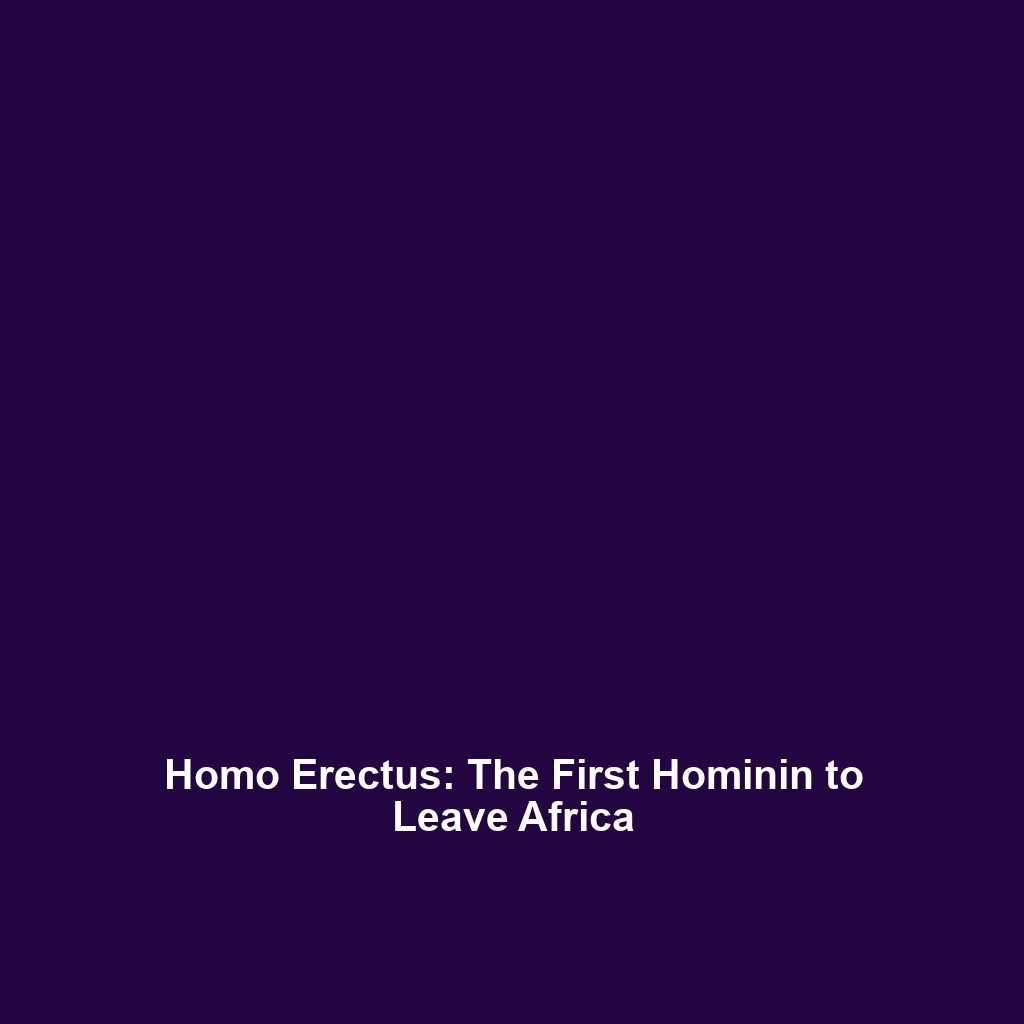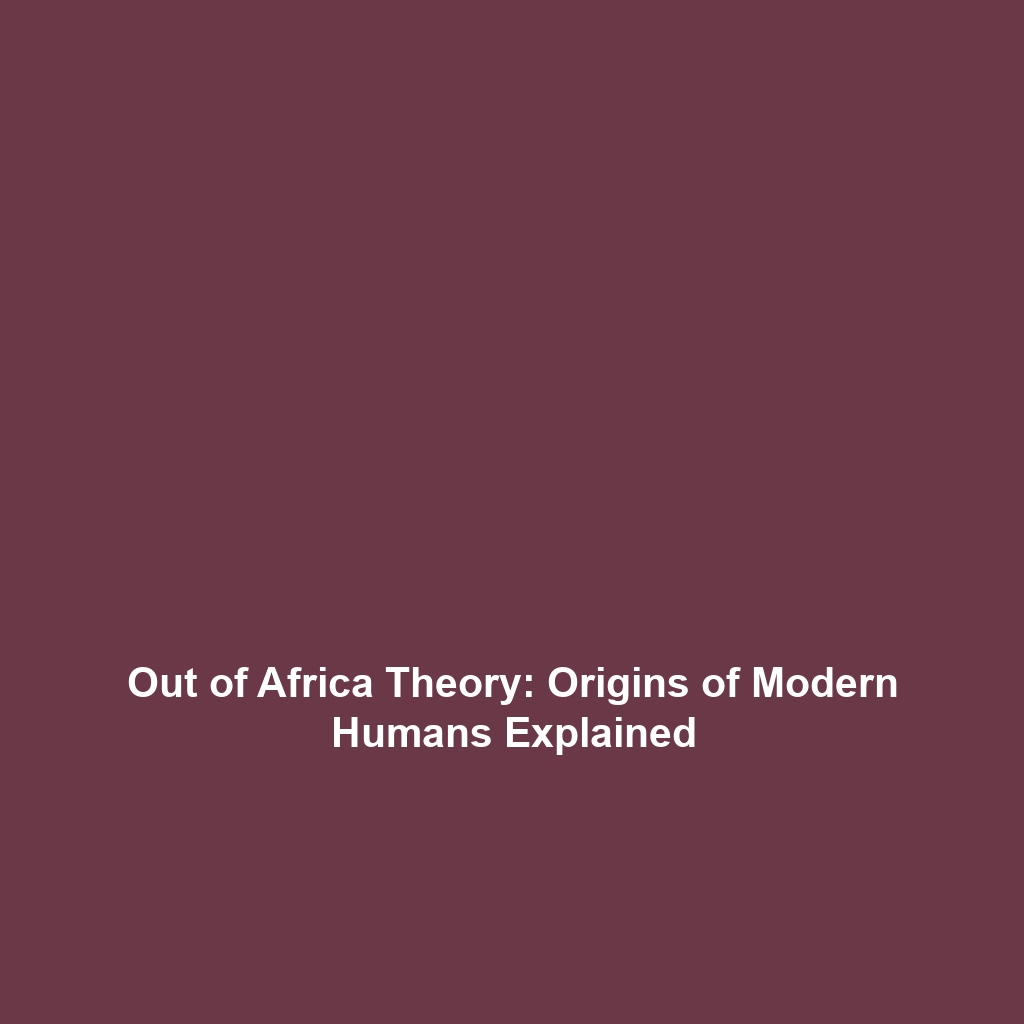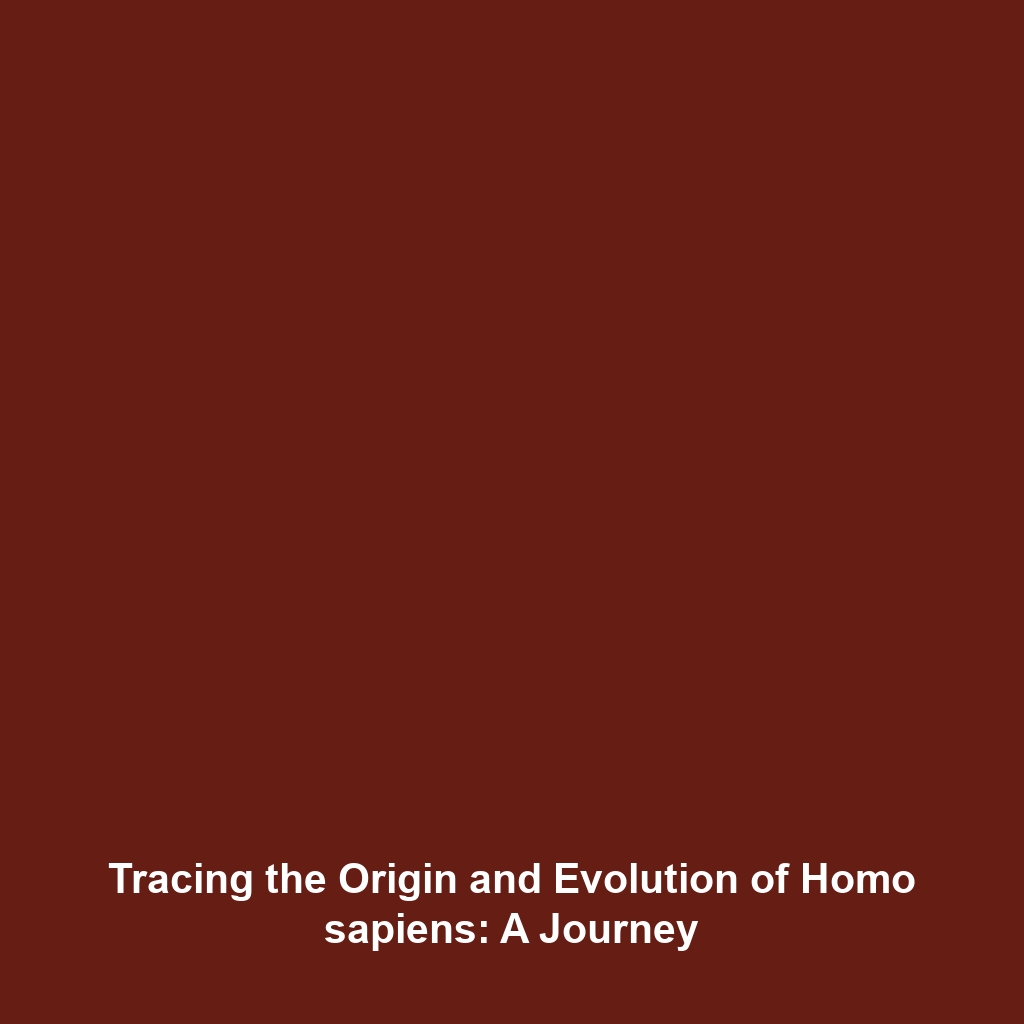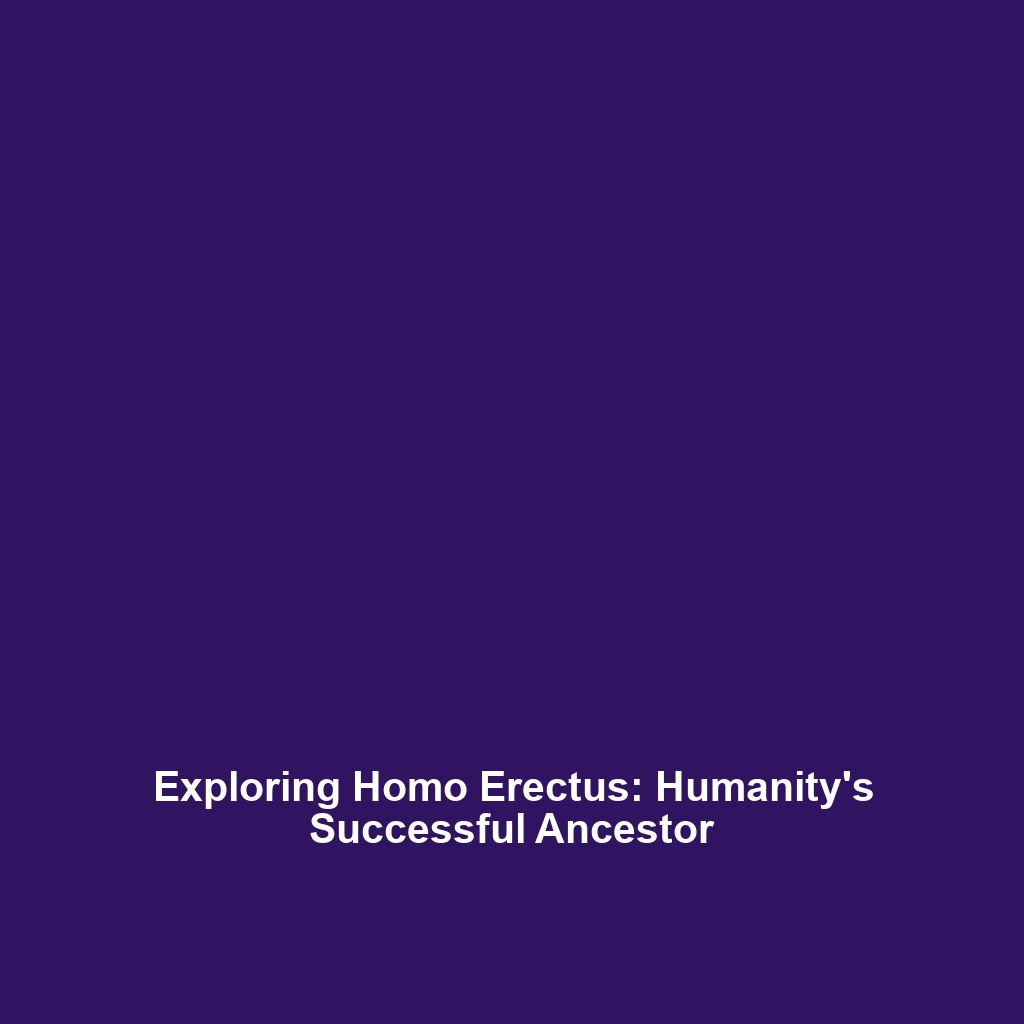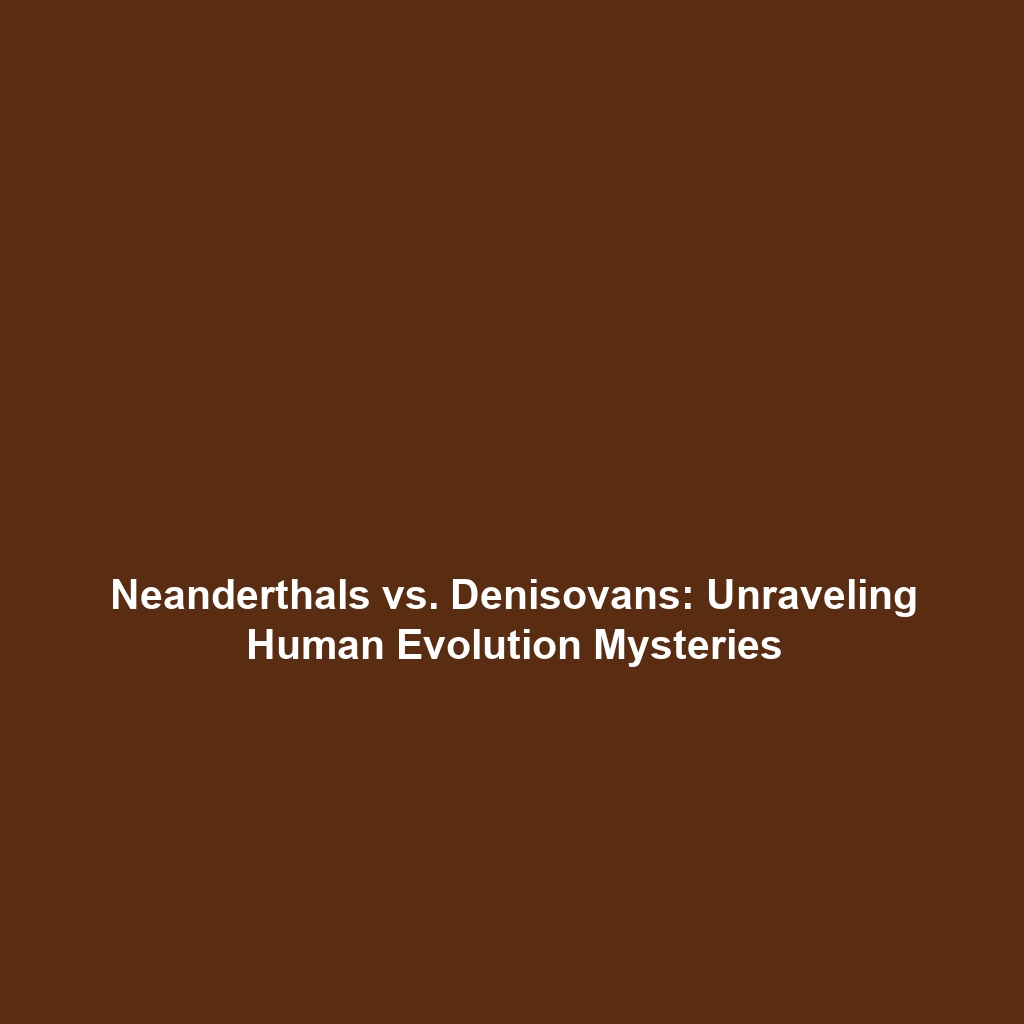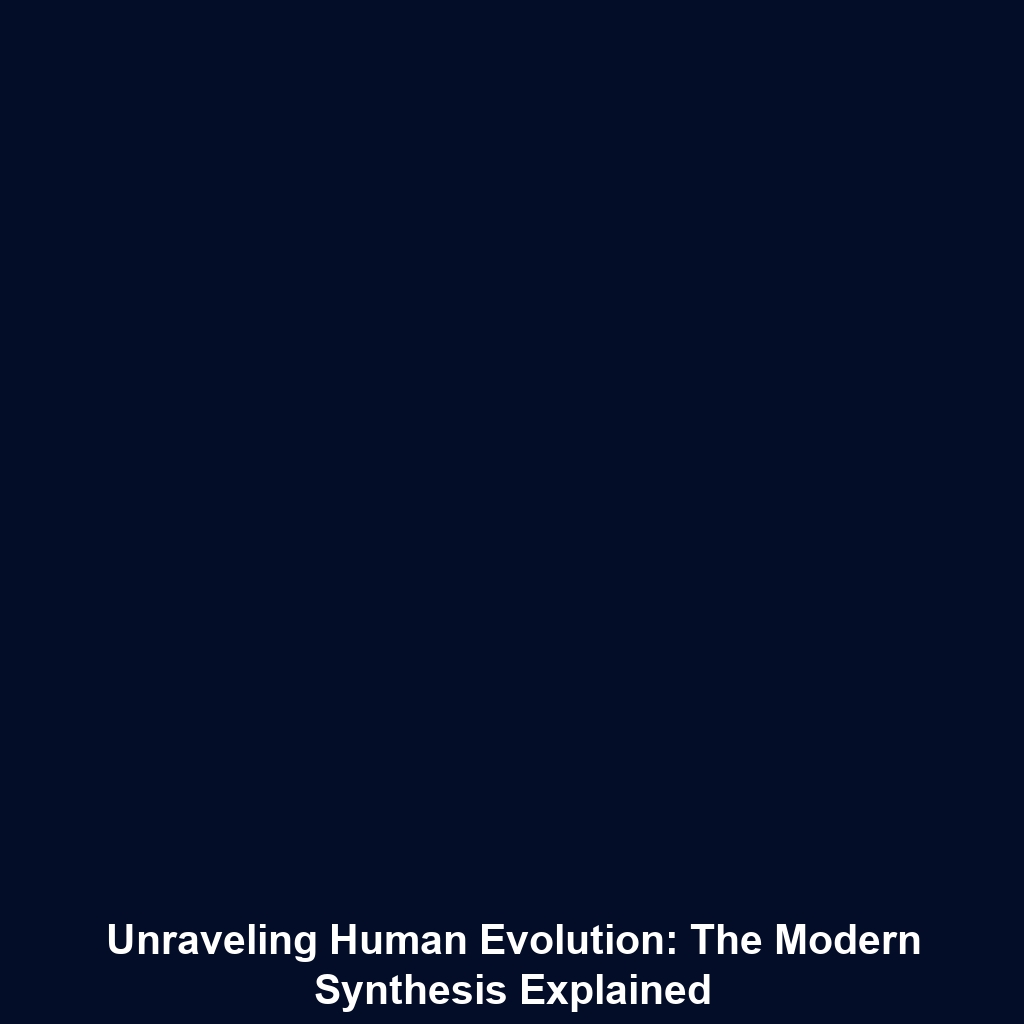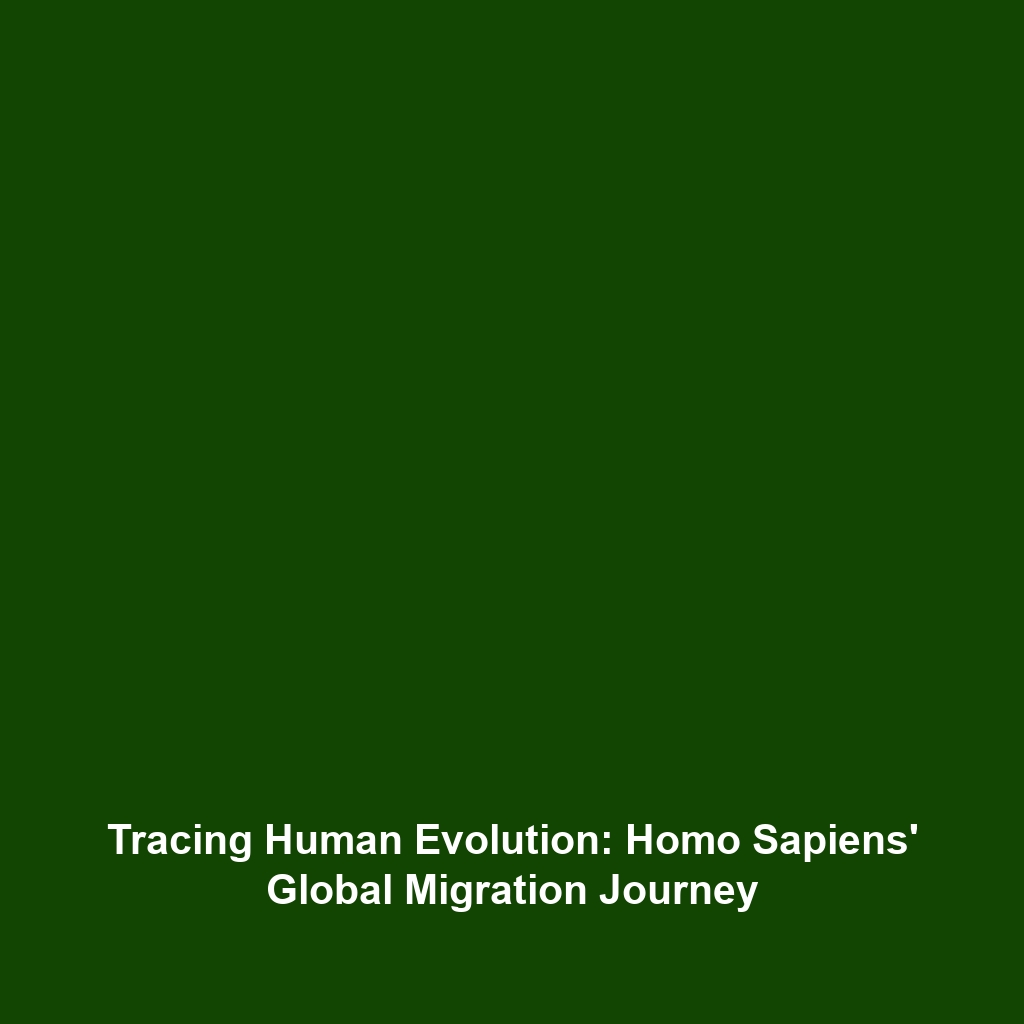Out of Africa: Homo erectus and the Dawn of Human Migration
Introduction
The concept of human evolution is punctuated by pivotal milestones, and one of the most significant is the Out of Africa theory. This theory posits that Homo erectus was the first hominin species to migrate out of Africa, marking a transformative moment in our evolutionary history. The journey of Homo erectus into Europe and Asia not only highlights the adaptability of early humans but also sets the stage for the subsequent evolution of modern humans. Understanding this migration is essential for grasping the complex narrative of human evolution.
Key Concepts
The Out of Africa Theory
The Out of Africa model suggests that modern humans originated in Africa before dispersing to other continents. Homo erectus, emerging around 1.8 million years ago, is believed to have been the first to leave Africa, with fossil evidence found across Europe and Asia.
Significance in Human Evolution
The migration of Homo erectus is crucial for several reasons:
- It indicates the first instance of long-distance migration among hominins.
- The species exhibited complex behaviors, including the use of tools and control of fire, showcasing an advanced level of cognitive development.
- Homo erectus adapted to diverse environments, paving the way for future human species, including Homo sapiens.
Applications and Real-World Uses
The study of Homo erectus and its migration has practical implications in various fields:
- Anthropology: Insights into early human behavior inform our understanding of social structures.
- Genetics: Mapping the genetic lineage provides clarity on human ancestry and evolution.
- Forensic Science: Techniques developed through studying ancient fossils help solve modern forensic puzzles.
Current Challenges
Despite advancements in research on Homo erectus, several challenges persist:
- Incomplete Fossil Record: Gaps in the fossil record complicate the reconstruction of evolutionary pathways.
- Debate Among Scholars: Differing interpretations of evidence can lead to conflicting theories about human migration.
- Technological Limits: Current dating methods sometimes provide inaccurate timelines.
Future Research and Innovations
Future studies on Homo erectus are expected to pave the way for innovative breakthroughs:
- Advanced Genetic Analysis: New techniques in DNA extraction may yield clearer insights into human ancestry.
- 3D Imaging: Enhanced imaging technology will improve fossil analyses, revealing details about early human life.
- Interdisciplinary Research: Collaborations across fields will deepen understanding of migration patterns and environmental adaptations.
Conclusion
The journey of Homo erectus out of Africa marks a defining moment in human evolution. As we continue to explore the implications of this migration, we gain invaluable insights into our origins and the adaptive strategies of our ancestors. For further reading, consider exploring our articles on Hominin Evolution and Migration Patterns of Early Humans.
